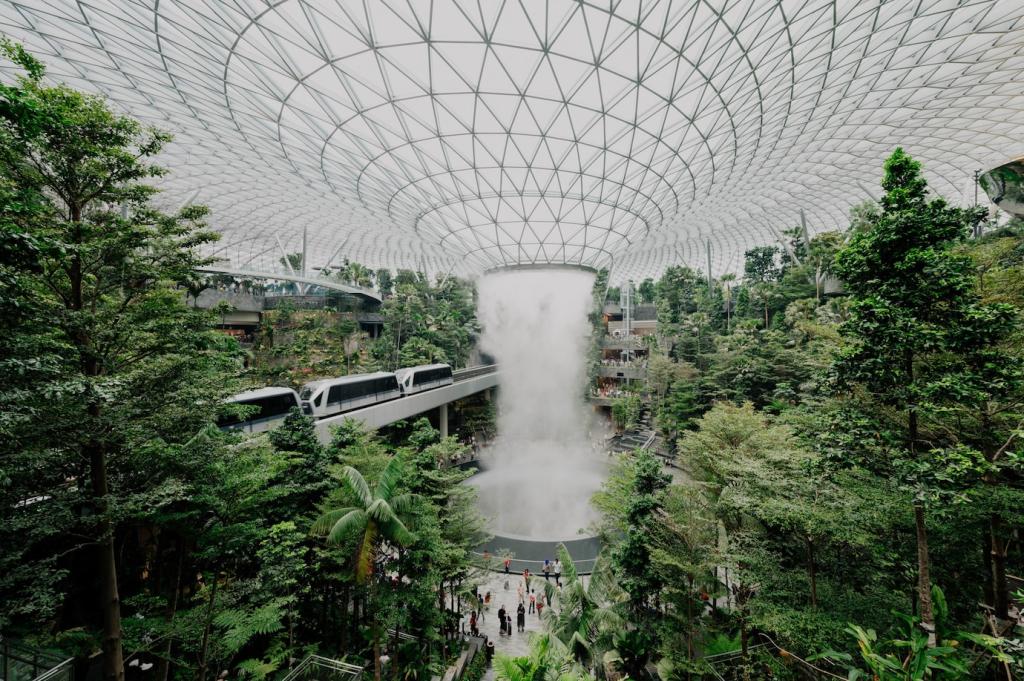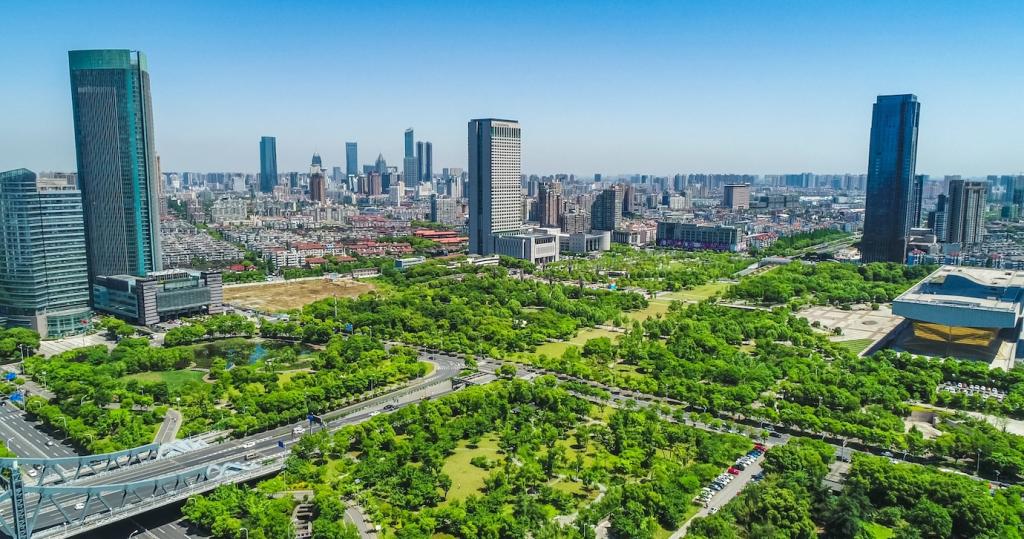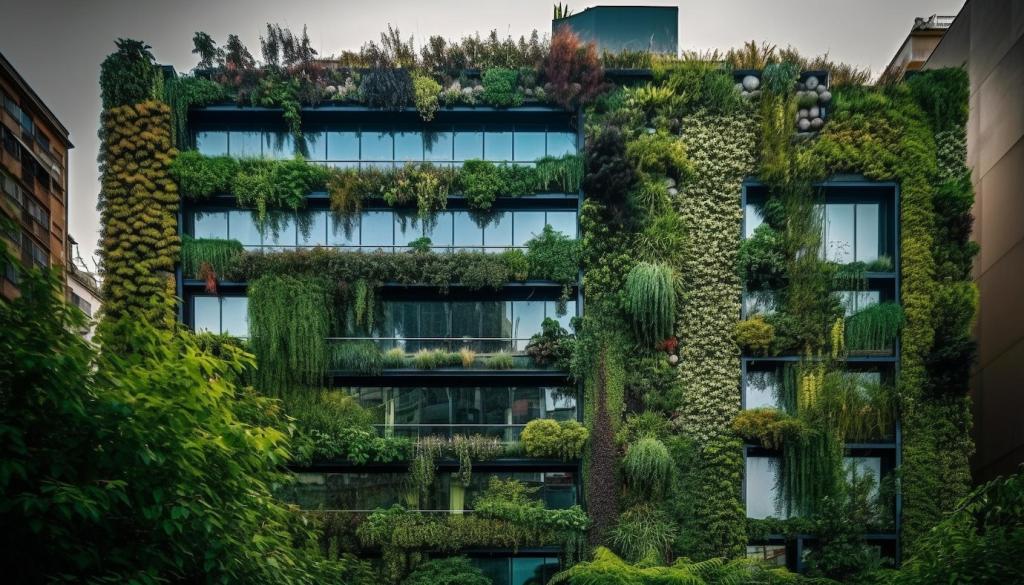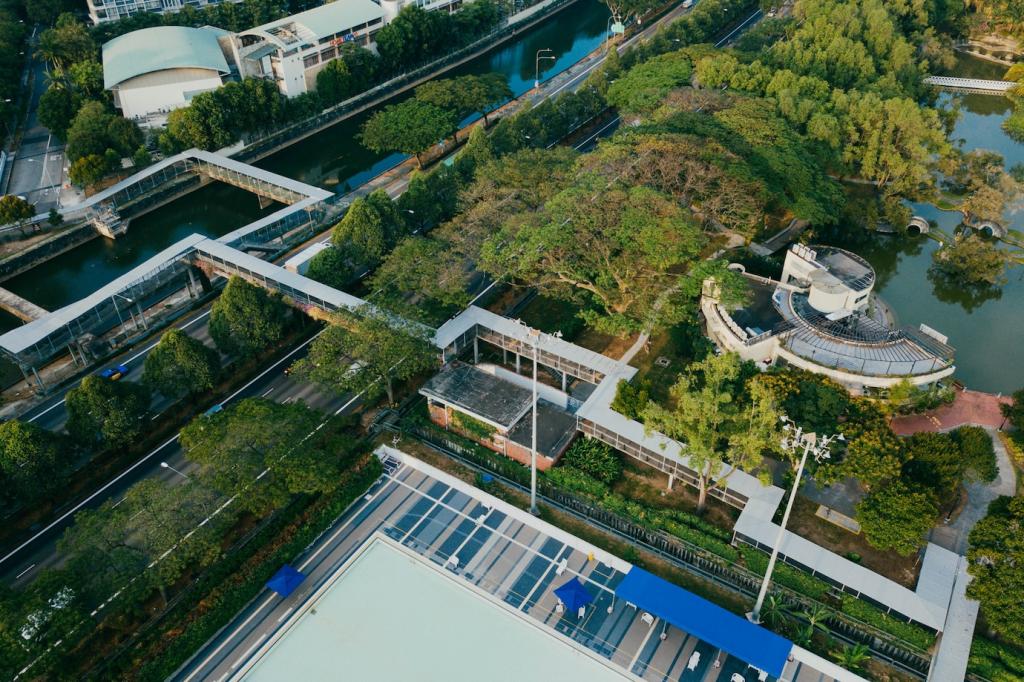The Role of Technology in Urban Green Spaces
Urban green spaces are essential components of thriving cities, offering environmental, social, and health benefits to residents. With rapid urbanization and technological advancement, the intersection of technology and green space management has become increasingly significant. Technology is shaping how urban parks, gardens, and pocket green spaces are planned, maintained, and experienced. From smart sensors to digital engagement tools, innovation is transforming both the stewardship and enjoyment of these vital urban assets. This page explores how technology is influencing the future of urban green spaces and enhancing their role in sustainable urban living.

Sensor Networks in Green Spaces
Sensor networks play a crucial role in the real-time monitoring of urban parks. These interconnected devices gather data on soil moisture, air quality, temperature, and even foot traffic patterns. The information collected allows city managers to make informed decisions regarding irrigation, planting schedules, and park usage optimization. As a result, resources such as water and manpower are used more effectively, reducing waste and ensuring that parks are healthy and well-maintained. Sensors can also detect equipment malfunctions or unsafe conditions rapidly, enabling swift intervention and fostering safer environments for all visitors.

Predictive Maintenance with IoT
The use of the Internet of Things (IoT) in predictive maintenance involves connecting park infrastructure—like lighting, benches, and playground equipment—to digital networks. These systems monitor wear and performance, flagging potential issues before they become significant problems. By forecasting maintenance needs, city authorities can schedule repairs proactively, minimizing downtime and mitigating the risk of costly damages or injuries. This approach leads to longer-lasting amenities, more reliable park services, and a higher quality experience for the community, supported by data-driven insights and operational efficiency.

Waste Management Solutions
Technological innovations in waste management are helping urban parks remain cleaner and more sustainable. Smart bins equipped with sensors monitor fill levels and can notify collection teams when they need servicing, eliminating unnecessary trips and reducing overflow. Some even use solar power to compact waste, increasing bin capacity. Data from these systems help optimize collection routes, reduce operational costs, and minimize environmental impact. Cleaner green spaces not only enhance visitor experiences but also contribute to local biodiversity by reducing litter-related hazards for plants and animals.
Digital Wayfinding and Accessibility
Modern navigation solutions have transformed the way visitors explore parks. Mobile apps, interactive kiosks, and QR codes help people locate points of interest, facilities, and accessible trails within vast park settings. These tools offer customizable routes for different needs, such as shaded paths for hot days or wheelchair-friendly circuits. Real-time information on events, weather, or available amenities empowers users to plan high-quality, convenient park outings. By enhancing wayfinding and accessibility, technology ensures green spaces are welcoming to all members of the community, regardless of familiarity or mobility challenges.
Augmented Reality Experiences
Augmented Reality (AR) brings a new layer of interaction to the park, blending physical landscapes with digital content. Through smartphones or AR glasses, visitors can access historical stories, local wildlife details, or educational games overlaid onto the scenery. This technology transforms routine walks into immersive experiences, making learning fun and contextual for audiences of all ages. AR can also support guided tours or art exhibitions, encouraging repeat visits and fostering greater appreciation for urban nature. As AR tools become more user-friendly, they promise to revolutionize recreational and educational opportunities in public parks.
Community Engagement Platforms
Urban green spaces thrive on community involvement, and digital platforms bridge the gap between park management and local residents. Online forums, apps, and social media channels allow users to report issues, suggest improvements, or join volunteer activities. Digital ticketing and feedback systems further streamline participation in events and programs. By facilitating open communication, technology empowers communities to influence how their parks are designed and used. This two-way engagement fosters a sense of ownership and pride, as citizens see tangible impacts from their input and involvement.
Previous slide
Next slide

Sustainable Practices and Environmental Monitoring
Climate and Air Quality Sensors
Advanced sensors monitor microclimates within urban parks, providing detailed data on temperature, humidity, and air pollutants. This information is essential for understanding how green spaces influence local climate resilience and public health. By mapping pollution hotspots and thermal patterns, city planners can optimize vegetation placement or initiate targeted interventions—such as increasing tree cover to reduce the urban heat island effect. These insights also inform public communications, alerting residents to air quality risks and promoting cleaner, healthier urban environments.

